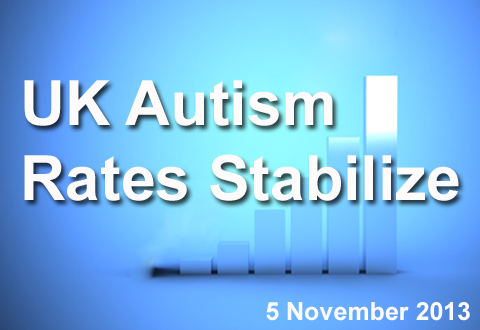Check out other stories from the Latest News
UK Autism Rates Stabilize from 2004 to 2010
By Shana R. Spindler, Ph.D. on November 5, 2013

Background: In several countries around the world, autism rates rose dramatically in the 1990s. In March 2012, the United States Centers for Disease Control (CDC) released results from a long-term study indicating that U.S. autism rates continued to rise—by about 78 percent—between the years 2004 and 2008. This publication prompted U.S. and United Kingdom researchers to explore autism rates in the U.K. for the same time period.
What’s new: On October 16, 2013, the online journal BMJ Open published a population-based study that looked at autism rates in the U.K. from 2004 to 2010 in 8-year-old children. Using the U.K. General Practice Research Database (GPRD), researchers found that autism prevalence remained stable during those years, even after the dramatic increase during the 1990s. Newly diagnosed cases also reached a plateau, with an average of 1.2 per 1000 boys and .23 per 1000 girls diagnosed per year across the seven years examined.
Why it’s important: While U.S. rates have continued to climb over the past decade, U.K. rates have appeared to stabilize. Compared to the CDC’s estimate of one in 54 boys and 1 in 252 girls with autism in the U.S., the current study suggests a lower prevalence in the U.K. at 3.8 in 1000 boys and .8 in 1000 girls. It’s important to note that differences in diagnostic criteria and study methodology may contribute to these discrepancies.
Help me understand :
| Source(s) : |
| Tweet |

